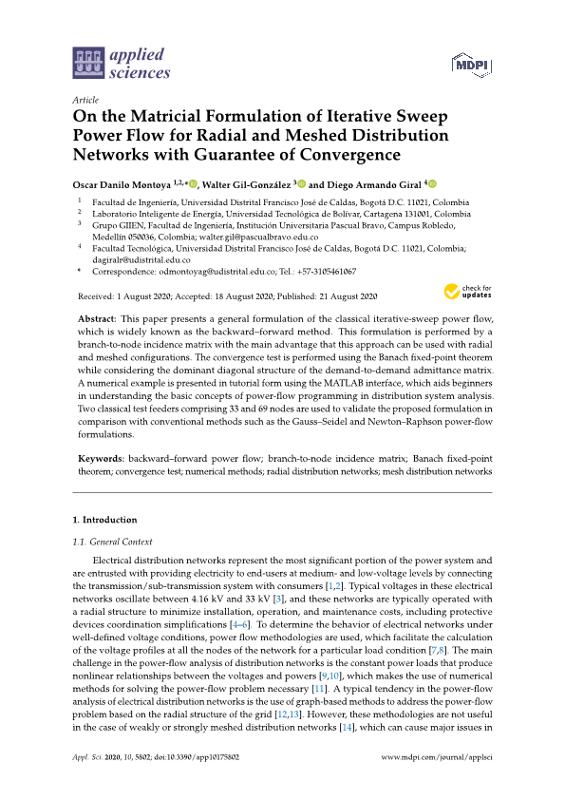Resumen
This paper presents a general formulation of the classical iterative-sweep power flow, which is widely known as the backward–forward method. This formulation is performed by a branch-to-node incidence matrix with the main advantage that this approach can be used with radial and meshed configurations. The convergence test is performed using the Banach fixed-point theorem while considering the dominant diagonal structure of the demand-to-demand admittance matrix. A numerical example is presented in tutorial form using the MATLAB interface, which aids beginners in understanding the basic concepts of power-flow programming in distribution system analysis. Two classical test feeders comprising 33 and 69 nodes are used to validate the proposed formulation in comparison with conventional methods such as the Gauss–Seidel and Newton–Raphson power-flow formulations.














